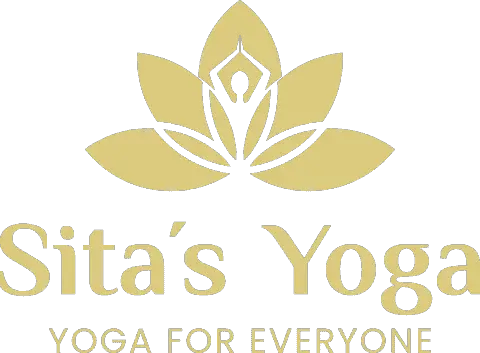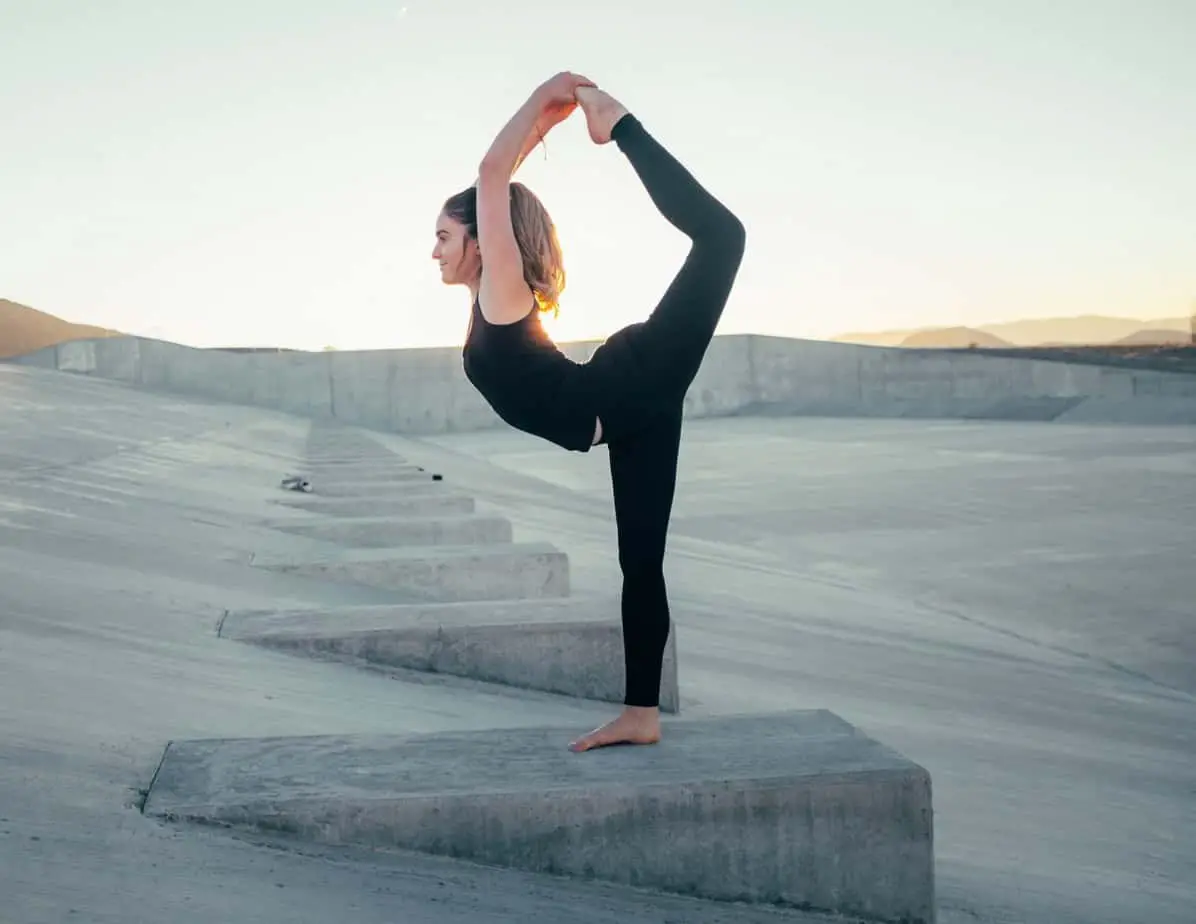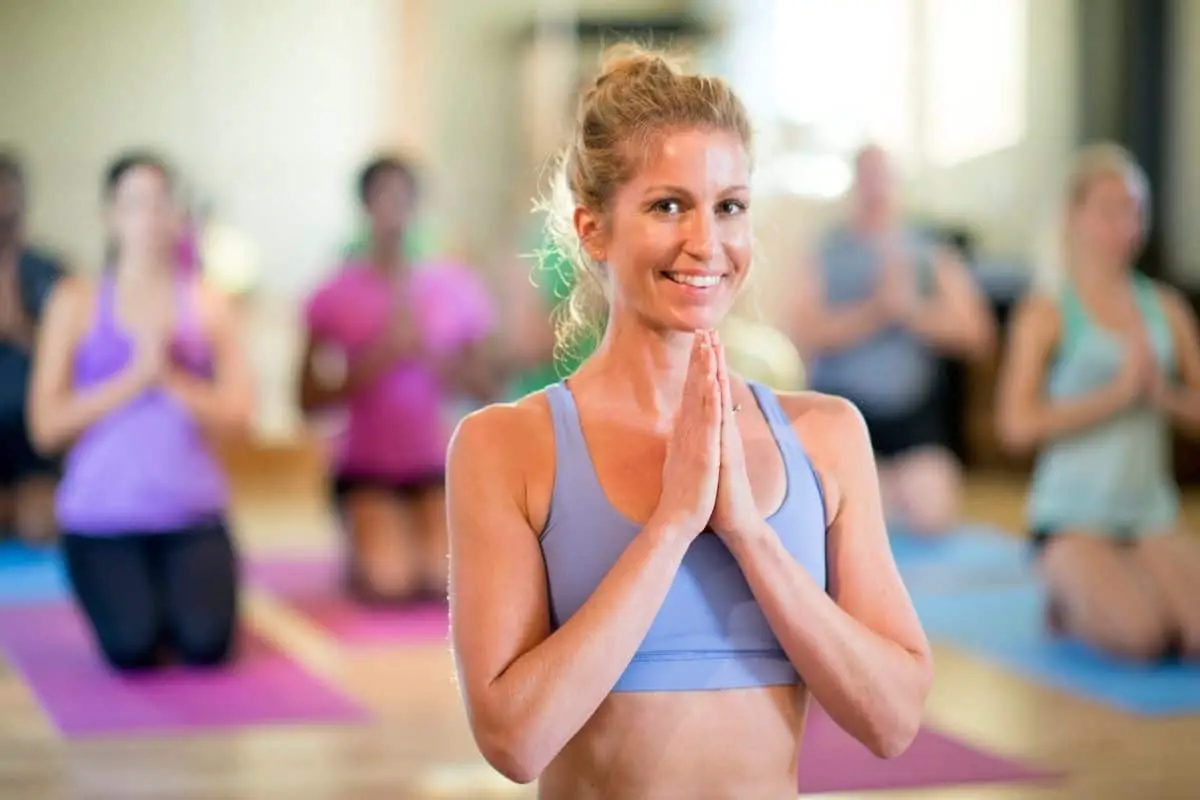Yoga is known to be one of the best exercises for improving flexibility and general health. As the practice has gained in popularity, there has been an ever-increasing number of styles, practices, and poses all claiming to be the best or provide the most benefits. For those looking to increase flexibility specifically, almost any yoga will help, but there are some distinct styles that focus on stretching and flexibility over other qualities.
To find what yoga style fits a person’s taste, it is important to consider many different aspects. Experience with yoga, general fitness level, time commitment, availability, and more – all of these will play a role in the best yoga for flexibility, changing the answer for each, specific person.
However, with that said, these are the nine best yoga styles for flexibility – choosing one of these, it is hard to go wrong. They all provide a focus on flexibility while also honing in on different aspects of yoga, ranging from physical recovery to intense workouts.
Hatha Yoga Is Great For Beginners Looking To Become Flexible
Hatha yoga is what the average person thinks of when they imagine yoga. Hatha yoga is the foundation for almost all western yoga practices, setting the basic poses and practices for other styles. Hatha yoga tends to focus on slow-paced classes, where a small variety of poses are held for a short period of time.
Hatha yoga is perfect for beginners who want to use yoga to become more flexible. The classes are slow-paced enough that almost anyone can follow along, and the pose holds are not difficult, lasting roughly thirty seconds each in most classes. This is a great length of time for becoming more flexible, as it will push your body just enough before releasing and moving on to the next area and pose.
Hatha yoga has a significant amount of room for improvement as well, making it a great choice for long term practice or those returning to yoga. Beginner classes will focus on simply getting the poses correct and properly stretching your body, while intermediate to advanced classes will incorporate alignment and strength building into each pose.
Learning Hatha yoga is a great idea for general yoga practice, too. As the basis for most other forms of yoga to be found in the west, the slower classes provide a great area and setting to learn the fundamentals safely. When using yoga for flexibility, it is important to show restraint and not hurt yourself – Hatha yoga can help with that significantly.
Outside of a focus on flexibility, Hatha yoga centers around the alignment of the body. In addition to using poses, breathing techniques, hand movements, and chants may be employed to further the experience. Overall, Hatha yoga is a gentle introduction to the world of yoga which almost anyone can incorporate into their routine, making it a fantastic option for those looking to dip their toes in.
Vinyasa Yoga Combines Fast-Paced Classes With A Focus On Flexibility
Vinyasa yoga is highly physical and often fast-paced, switching between poses and techniques often. This upping of speed over other forms of yoga can be difficult for true beginners but can help improve flexibility by targeting more specific areas of the body.
Vinyasa yoga may also be found under the name “power yoga” in the west, as it was introduced this way when it was first taught here. The principles are very similar, focusing on quick movements that help stretch and strengthen the body. The name change came about to make the practice more appealing to the average American, but most modern yoga studios are likely to use the original name now.
Vinyasa yoga is known to use sequences, where different asanas, or poses, flow together from one into the next. This flow is quick and lends itself to the practice heavily, with each pose lasting less than thirty seconds. Often, these different sequences will target different areas of the body or different developments.
Various sequences in Vinyasa yoga will focus on flexibility, balance, or strength. Each sequence inevitably ends up helping all three as the body is fully engaged, but the focus of some sequences on flexibility specifically makes this a great option for those looking to become more limber.
Often times, vinyasa yoga can feel like a proper workout – with how often you switch between poses and sequences, you are likely to work up a sweat and not have time to stop. Especially as classes hit the intermediate and advanced levels, some sequences may incorporate difficult movements, like shoulder or headstands, or full bends which require enormous flexibility. Practicing vinyasa yoga will work you up to these difficult poses, improving flexibility and body control through fitness.
The variety of poses and sequences used in Vinyasa yoga are a large attraction for many. Most classes will have attendees switch between standing, sitting, and inverted poses, keeping things interesting and loose.
Hopping directly into Vinyasa yoga may be daunting as a total beginner or someone who has not worked out previously. Luckily, Vinyasa uses many of the same poses and asanas as Hatha yoga, making it a natural next step for beginners who want to move to more active classes. If you have experience with yoga or work out somewhat regularly and want the positive effects of a fast-paced class, consider hopping directly to this style.
Improve Flexibility Even Further By Practicing Hot Yoga
Most everyone has heard of hot yoga to some extent. It became incredibly popular in the late 1990s to early 2000s, with studios popping up all over the United States, claiming its incredible benefits. While the craze has died down a fair amount, one thing has remained true – practicing hot yoga is incredible for improving flexibility.
The idea behind hot yoga stems from Bikram Choudhury, who popularized it here in the United States. The intention of hot yoga is to match the climate of India so that participants sweat and become loose. The heat comes with many benefits, but the one most relevant to flexibility is this; as you get hotter, your muscles become loose and limber. This allows you to stretch even further than normal, ultimately increasing your flexibility.
Any yoga can technically be practiced as hot yoga, but the most popular form is Bikram, named after the aforementioned founder. In the case of Bikram yoga, classes are highly structured. Each one is 90-minutes, centered around 26 poses. These poses are gone through twice, with some breathing work in between.
Bikram yoga is highly physical, switching between these poses often. The difficulty is increased further by the heat, so it is best to somewhat physically fit or practiced with yoga before attempting hot yoga. Come prepared with a towel and water bottle as well, as hot yoga tends to be closer to a traditional workout than other forms of yoga.
Bikram yoga has reduced in popularity thanks to a variety of reasons, but various studios can still be found across the United States. Additionally, other forms of hot yoga are still available and accessible for those interested purely in the benefits gained from practicing yoga in the heat.
The largest benefit of hot yoga is the increased limberness of muscles in the heat. Thankfully, this can be recreated in a variety of ways even without a proper hot yoga studio. As you gain flexibility, the heat will allow you to push to even higher heights and become more and more flexible.
Hot yoga is ideal for intermediate and advanced yoga practitioners who want to experiment with different forms and ideas, or who want to focus on general health. Beginners and those with previous injuries may struggle with hot yoga, so it is best to start somewhere else. For those who enjoy this process or can handle it, Bikram yoga is one of the best styles for improving flexibility in both the short and long term.
Yin Yoga Gets Flexible With Deep Stretches And Long Holds
Yin yoga switches gear dramatically and slows down. Rather than switching between a large number of poses in short bursts, yin yoga focuses on holding specific asanas for long periods of time. Beginners may hold a pose for 45 seconds to two minutes, while advanced yogi will often stay in a single pose for upwards of five minutes.
Yin yoga is unique in a variety of ways. Yin yoga focuses on applying stress to and stretching out connective tissues rather than muscle. It combines this unique goal with principles of traditional Chinese medicine to create a yoga style that is highly focused on flexibility and improving the health of the body slowly.
The focus on connective tissue over muscle makes yin yoga a perfect companion to other workout or yoga routines, as it will not aggravate injuries or introduce new stress upon the body. Instead, the focus is to relax and help alleviate those issues while stretching the body in a unique way.
Poses used in Yin yoga are often very similar to those found in Hatha yoga, with minor changes to allow focus on ligaments and tissue. As yin yoga is further practiced, these stretches can help with fixing bodily injury and dramatically increasing flexibility.
Yin yoga gets its name and is deeply based on the concept of yin and yang. Yin is often described as stable, immobile, passive, and downward moving. On the opposite end of the spectrum, yang is changing, mobile, active, and upward moving. The focus on the immobile is vital to yin yoga and directly seen in the long-held stretches and poses.
Thanks to this lack of movement, yin yoga is not intended as a main exercise. Instead, the creators often recommend that yin yoga is incorporated into a traditional yoga or workout routine as a way to further increase flexibility and stillness.
For those with busy schedules who can only fit in one workout routine and want a bit of everything, yin yoga sadly is not the option – however, for everyone looking to increase their flexibility just a bit more through a unique method, this is a fantastic choice.
Yin yoga is less popular than some others on this list, so it could be difficult to find a studio to practice at. Thankfully, many larger yoga studios offer yin yoga as a companion class to other forms. It is a worthy use of time for those who want a calm way to make their body more flexible.
Ashtanga Yoga Is Challenging But Will Stretch And Circulate Your Whole Body
Ashtanga yoga is a challenging style that focuses heavily on sequencing poses, continuously moving the body. It is extremely similar to Vinyasa yoga, with a few key differences. The first is that Ashtanga yoga is highly traditional, performing the exact same poses every time. Additionally, each pose is linked to a breath, increasing the demand of the whole ordeal.
Ashtanga yoga is highly based on ancient yoga teachings and has a strong history because of it. The reason for using the same poses every time is two-fold; it is heavily linked to the history and continues the tradition of yoga, and it allows practitioners to hone in on minor mistakes and correct them.
Tradition is vital to Ashtanga yoga and sets it apart from vinyasa yoga. The original instructor is Pattabhi Jois, and their grandson and son have continued the teachings to this day. All official ashtanga yoga classes are taught by instructors who were personally trained and worked with R. Sharath Jois, Pattabhi’s grandson. This has lead to a very small, well-taught community around the art.
This is a highly demanding form of yoga, stretching and strengthening every part of the body. As you become more experienced with the different poses and sequences, you will be able to increase your performance on both fronts. For those who are interested in furthering their physical health with the benefit of improved stretching, ashtanga is a perfect choice.
Ashtanga yoga focuses on three main components, also known as tristhana. These are considered the “three places of action or attention”, and are meant to be focused on each time ashtanga yoga is practiced. The three focuses are:
- Breathing system
- Posture or pose
- Looking place
Focus is meant to be held on all three continuously while practicing, changing with every pose and sequence. Ashtanga uses each of these in turn to help the body become strengthened and flexible.
As can be expected, ashtanga yoga is not ideal for beginners or those new to exercise. This is one of the most demanding forms of yoga available in the west, and advanced practitioners do complicated routines that could hurt the untrained. However, the community around ashtanga yoga is small and tight-knit, allowing for extreme growth with a dedicated base. It is a great option for those looking to take their fitness to the next level while becoming more limber than previously thought possible.
Restorative Yoga Slows Down And Allows Your Body To Settle Into Flexibility
Restorative yoga is a style that centers around slowing down and letting your body relax through passive stretching. Rather than moving and purposely stretching your body, as most yoga styles do, restorative yoga uses various props and poses to let your body do the work.
The focus on passivity creates an entirely different experience than most other yoga styles. Your body goes loose almost entirely, and movement is extremely rare; poses tend to last upwards of ten minutes. Deep stretching occurs as your body is allowed to relax into comfortable poses, relieving tension on different areas where stress and common use tends to create knots.
Restorative yoga introduces props such as foam rollers, blankets, and blocks. These are largely used to support your body during the various poses so that you can truly relax and let your body go. For restorative yoga to work and allow for flexibility, it is important to trust these props and the environment and try to let loose as much as possible. The point is to ease the tension that naturally exists in the body and get loose.
As with yin yoga mentioned earlier, restorative yoga is not intended to be a replacement for exercise. The deep stretches and poses that restorative yoga uses are great for stretching the body and may even cause soreness for those who are particularly tense, but the lack of movement means it is not a complete system for proper wellness. However, it can be a fantastic addition to anyone’s routine.
Breathing exercises are vital to restorative yoga, both as a way to keep focused on the relaxation and to properly stretch the body. Specifics of breathing, meditation, and pose changes will often differ between instructors but all should contribute to the relaxed environment.
It can be difficult to believe that deep stretching and flexibility can be improved by simply relaxing the whole body into various props, but the proven benefits of restorative yoga show otherwise. Simply letting your body properly relax moves muscles in a way that is unique, contributing to flexibility. Additionally, restorative yoga comes with other great benefits. Through clinical studies, restorative yoga has shown to improve anxiety, depression, and fatigue in cancer patients.
Iyengar Yoga Uses Props and Exercise To Minimize Injury And Increase Flexibility
Iyengar yoga is a fantastic choice for beginners, those with physical injuries or limitations, and the elderly to get into yoga and increase their flexibility. The style emphasizes correct posing and alignment to avoid injury and properly stretch muscles, and uses props like blocks and blankets to help with that goal.
Similarly to Hatha yoga, Iyengar yoga is highly suitable for beginners. Unlike some other choices, Iyengar yoga allows practitioners to truly focus on each individual pose and get it correct, without worrying about moving on to the next. This way, injury is prevented and proper stretching occurs for every pose.
Iyengar yoga also focuses on the sequence of each pose, as they are meant to stretch the body in a defined order. The speed of this sequence is often not important; instead, it is the movement of one pose to the next which holds value.
Poses are held for an average length of time in Iyengar yoga, enough to stretch out muscles without causing pain or discomfort. The use of props in Iyengar yoga is essential to allow beginners to try different poses more easily and fully. Essentially, props are used to prevent injury and let true, proper stretching occur, even without years of prior practice. They have the added benefit of allowing the elderly and injured to partake in yoga more easily, helping them recover or gain movement once again.
Speaking to the value of correct posing, Iyengar yoga very much prioritizes quality over quantity. Rather than introducing a wide variety of different poses which may be done slightly incorrect by beginners, the focus is placed on a select few which are then mastered.
The creator of Iyengar yoga, B. K. S. Yengar, is often credited as the creator of modern yoga. This is largely due to his book, Light on Yoga, which was published in 1966 and started the western yoga movement. It is considered the guiding light for almost all yoga styles currently practiced, and the poses and qualities found in Iyengar yoga can also be found within the covers.
Along with the storied history of its creator, Iyengar yoga continues to be highly practiced today, and is a great choice for beginners. The focus on correct posing for various asanas and getting a quality stretch provides a great base for any future yoga endeavors and is sure to increase flexibility in the future.
Viniyoga Is Tailored To Your Specific Body To Meet Your Goals
Viniyoga is a style that is heavily focused on personalization and incorporates the teachings of all yoga types. This largely inclusive style employs poses, sequences, chanting, breathing exercises, meditation, and textual study in varying degrees to meet the goals of the individual practitioner.
This focus on personalization makes it great for those looking to increase their flexibility, as specific poses and sequences can be picked by the instructor to meet that goal. This individualizing of practice also makes Viniyoga great for beginners, as instructors will guide and correct at every step along the way.
Unlike other yoga styles that focus on the form of different poses and the structured history of yoga, Viniyoga is much more focused on results. This style has been willing to adapt and change various poses and sequences to achieve specific goals, rather than leaving them alone in the name of tradition.
Along with individualized goals for every practitioner, each session of Viniyoga itself is also unique. In theory, this allows each session to perfectly match exactly what the practitioner needs that day. For instance, on a day where you are feeling more limber than normal, the exercises and poses used will match that and push you further than normal, capitalizing on the opportunity.
Viniyoga can be seen as a modern, adaptive take on the traditions of yoga. Unbothered by reasons such as tradition and large classes, the true goals of everyone in attendance can be brought to the forefront. While this adaptation may be a boon for many, some people revel in the history of yoga and will not enjoy this tweaking of the art. Consider what you want out of yoga in addition to flexibility before deciding.
ISHTA Yoga Combines Multiple Styles, Finding Flexibility And Fulfillment
ISHTA yoga is a style that is meant to be a holistic practice of yoga; rather than focusing just on the exercise or mental aspects of yoga, this combines all of them to create one experience to better the whole person. ISHTA is an acronym standing for Integrated Science of Hatha, Tantra, and Ayurveda.
Similarly to Viniyoga, ISHTA yoga is highly personalized and each practitioner is given their own routine. A key difference between ISHTA yoga and others on this list is the inclusion of more than just poses and sequences; ISHTA yoga is intended to be fulfilling for physical, mental, and spiritual needs, rather than just focusing on one.
ISHTA yoga is ideal for those who want to experience all yoga has to offer while still becoming more limber and flexible. If you prefer a personalized experience that will not only make you more flexible but also contribute to mental and spiritual happiness, ISHTA is a fantastic, do-it-all experience. The generalized teachings mean that progress on flexibility may be slower, but more is learned along the way as well.
ISHTA yoga also works well for those looking to grow and make yoga part of their daily practice, rather than treating it as an exercise class or activity. The more time and commitment you put into this style of yoga, the more you are likely to get back from it.
ISHTA yoga is not ideal for those who are just looking to increase their flexibility, or who do not want to dedicate themselves to learning about the different aspects of yoga. Most beginners should likely start in a different style and learn about some of the teachings and philosophies before dedicating themselves to such a personalized style. However, for those who have experience with yoga and want to get even more out of it, this is a great option.
Sitasyoga.com is a participant in the Amazon Services LLC Associates Program, an affiliate advertising program designed to provide a means for sites to earn advertising fees by advertising and linking to Amazon.com. We also participate in other affiliate programs which compensate us for referring traffic.




